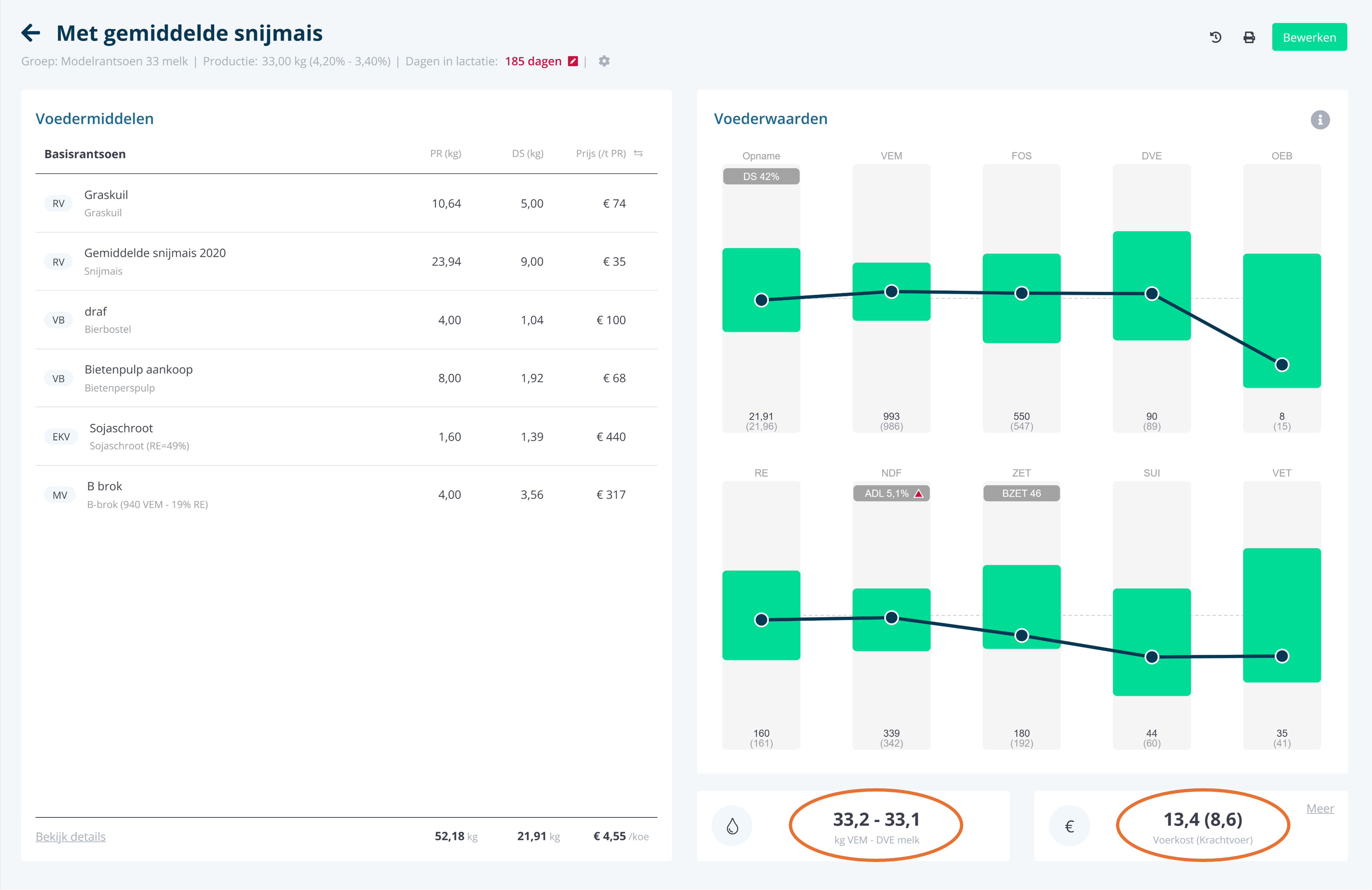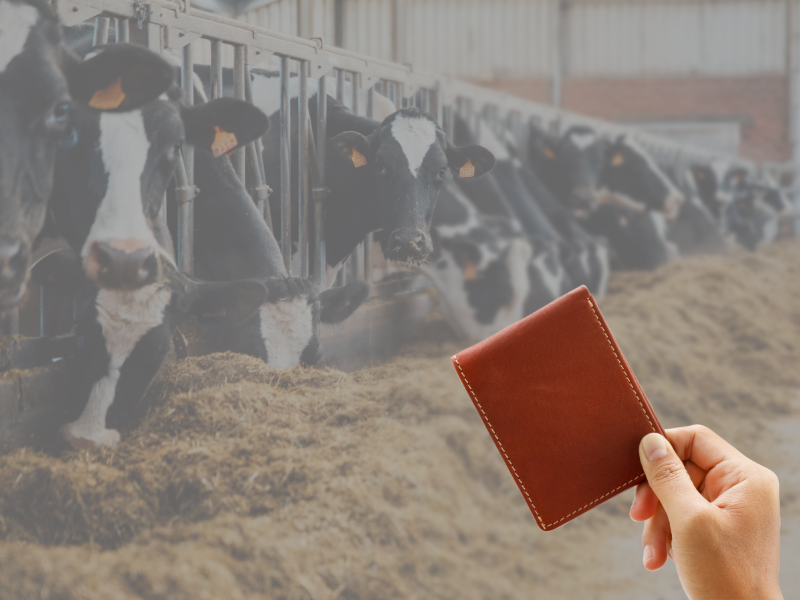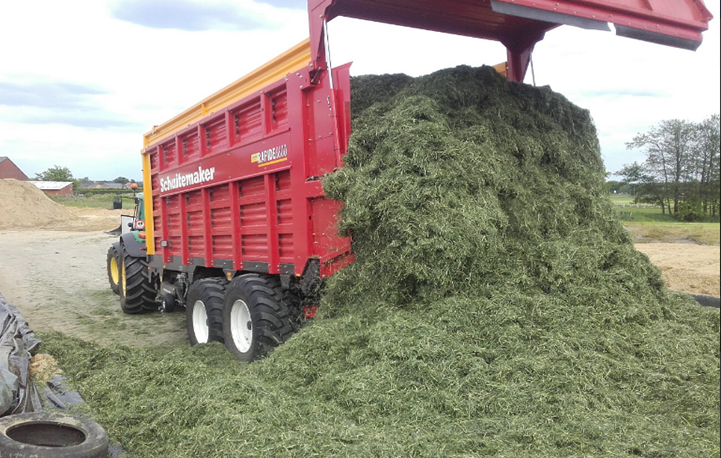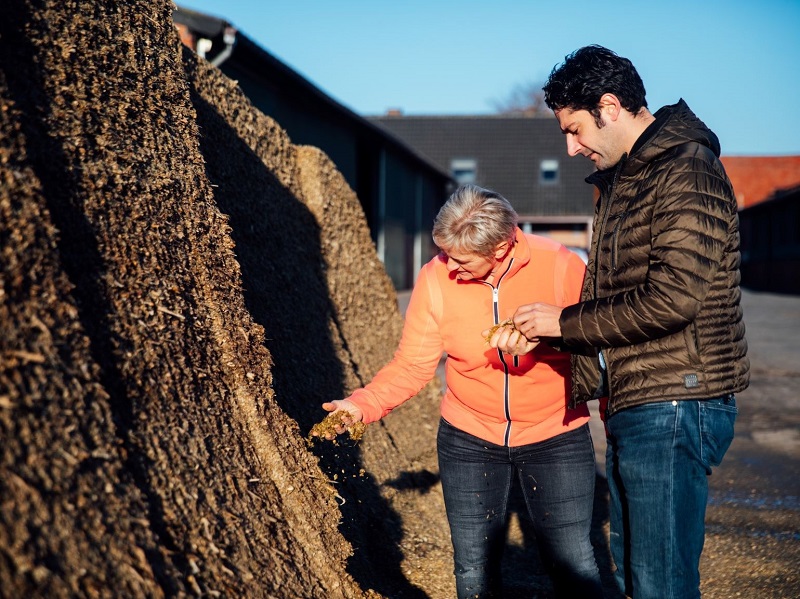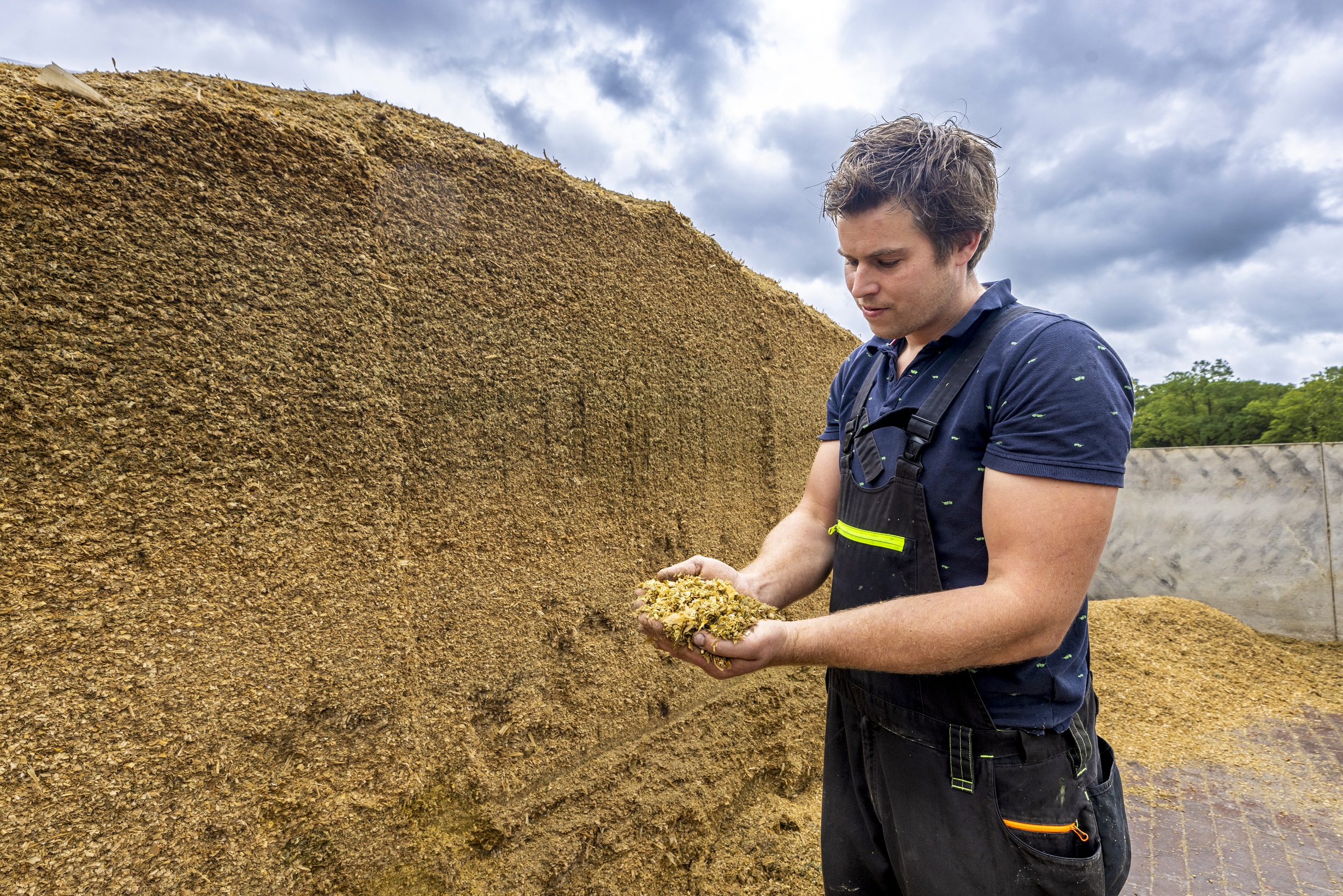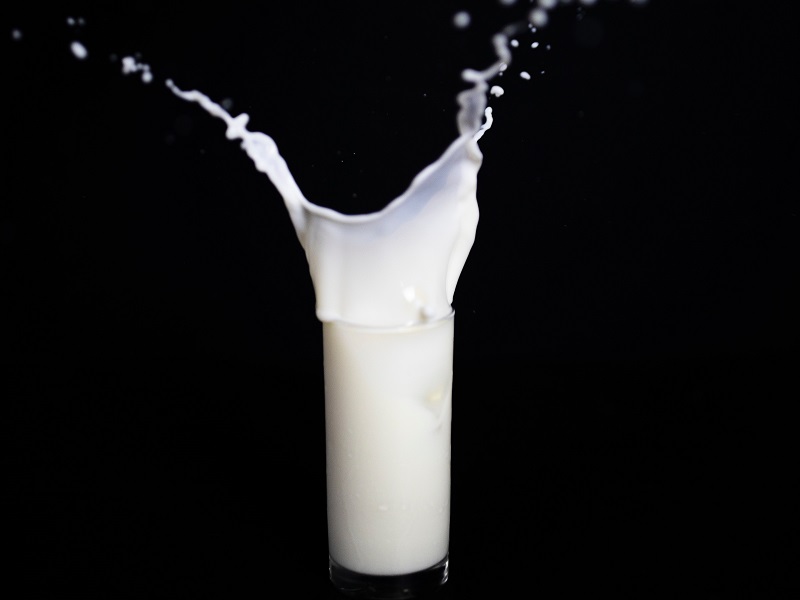We always saw in recent years the reflected again in the cut corn quality. Where are we going to end up this year with the wet spring that continued strongly through the rest of the growing season?
What can we expect?
The first maize could be sown as late as mid-April on the really high plots in some regions, but even long after the longest day of the year, quite a lot of silage maize was still being sown, especially on wet soils. Not only the sowing date, but also the soil condition, the weather during the growing season and the time of harvest will determine the quality of the silage corn.
Perhaps the silages will show lower starch content on average, but there will also be many silages that are likely to end up with very low starch content.
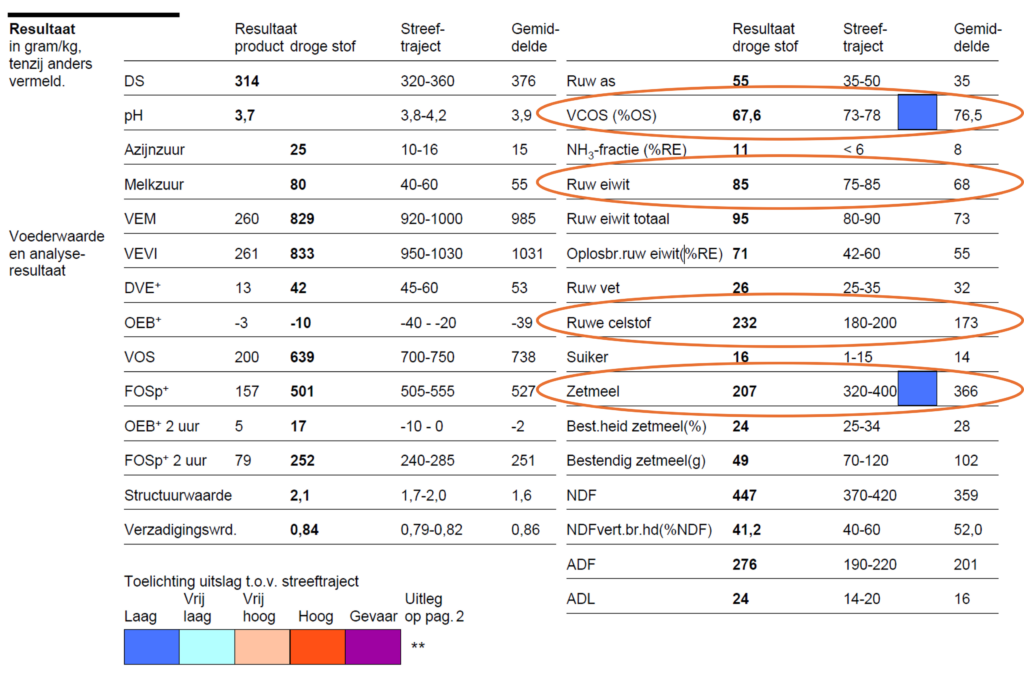
Let the above analysis be an example of cut corn sown in 2020 after the longest day to be harvested 100 days after sowing. More protein and less starch is the simple prediction and observation. In addition, crude fiber content increases and digestibility decreases.
If we were to calculate the forage value today, it comes to 174 euro forage value per ton dry matter and this at just good average corn of 18 tons dry matter yield per ha per year. This gives a total forage value of 3132 euros per ha.
With a third less yield, that is, 12 tons of dry matter per ha per year at late sowing and with much lower quality, we get a totally different picture: the feed value price drops to 143 euros per ton of dry matter. So this late corn with lower forage value and less yield only brings in 1716 euros of forage value per hectare.
Effect of lesser corn on the ration
If we were to feed the same amount of dry matter despite the lower quality of this corn, it greatly affects the productivity of dairy cows:
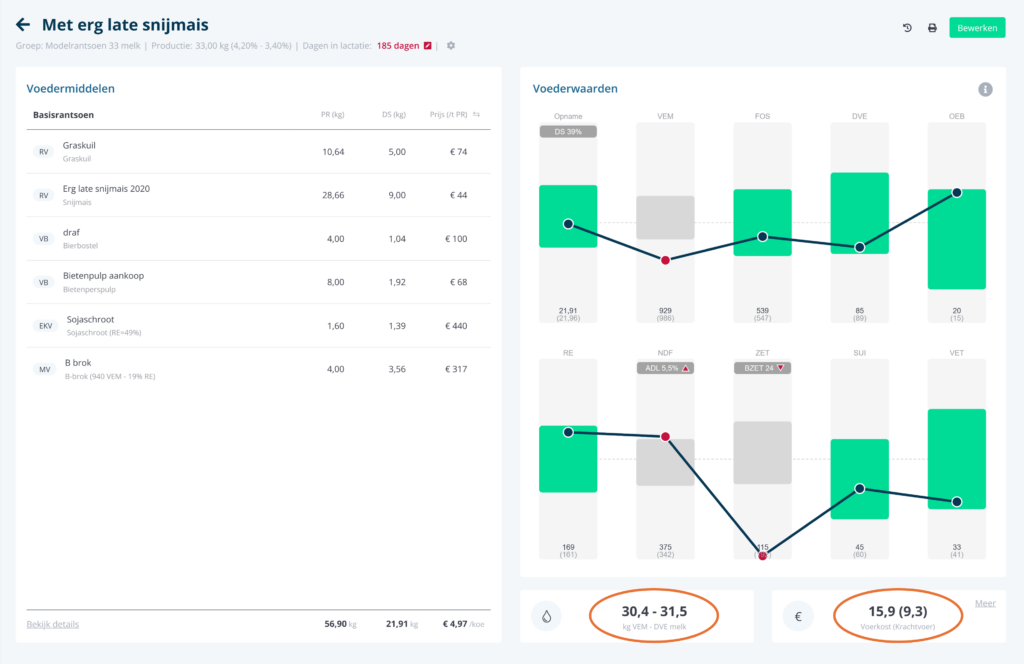
We arrive at a production potential at least 2.7 kg of milk lower with the poor cut corn, with energy becoming the limiting factor. This also increases the expected feed cost by 2.5 euros per 100 kg of measured milk. Perhaps the high NDF content plays further into the disadvantage in terms of assimilability.
Relationship between starch content (in silage corn) and feed profits
From an analysis on feed lists and milk data of 104 Flemish and Dutch Farmdesk farms for the year 2023, we find that the total starch in the ration for high-yielding dairy cows is decisive for a good farm economic result. In this respect, good maize always pays off at the bottom line: farms where silage maize with a higher starch content is fed generally have a better feed profit per cow.
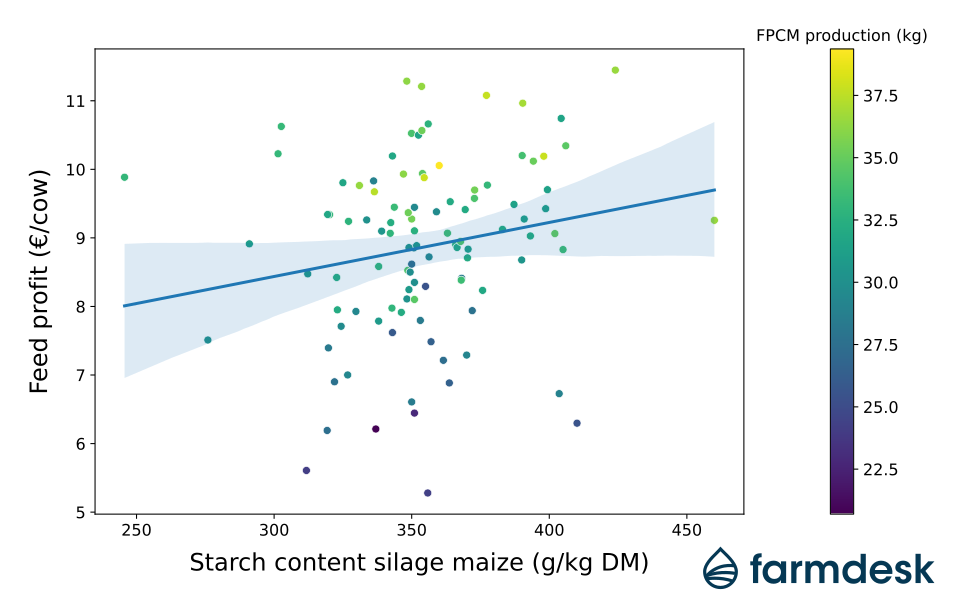
Knowing all these things, is it expedient to buy additional low-starch corn (still only at the seller's cost) to offset the third of the lower yield we may have ourselves?
An alternative scenario worked through
Thus, on a farm with 100 producing cows, lower quality silage maize gives a theoretical production drop of at least 2.7 kg of milk.
Question will be whether that will keep the animals healthy given their energy constraints? And Will the contents remain at levels?
Only taking into account the proposed minimum decrease in production results in a theoretical lesser yield of 1.215 euros per cow per day, at a milk price of 0.45 euros per kg of milk.
Over a full year with 100 cows, this makes 44347.5 euros, so to speak, a full income.
Perhaps it would be better to offset the starch-poor corn with the purchase of corn meal, for example. Even at a market price of 245 euros per ton for cornmeal, we get much better figures.
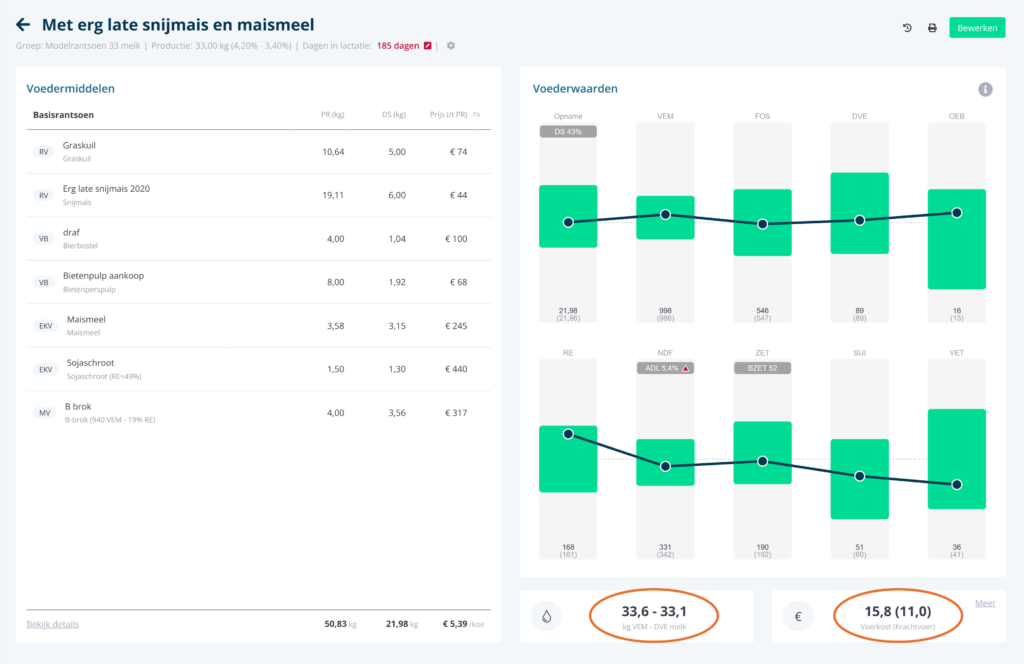
We maintain productivity and feed costs do increase by 0.84 euro per cow per day (5.39 vs. 4.55). This comes to 30660 euro extra feed cost to maintain productivity. The ration will be better balanced, the cows will be healthier and the contents will be easier to maintain.
The last option where we compensate with cornmeal gives a loss of 69% compared to the loss we would take with just poor cut corn feeding.
Should we have price-setter power in the milk market we would add at least 3 cents to the milk price to digest the poor corn year....
Barley instead of cornmeal?
We know that corn meal contains very slowly digestible starch. If the necessary fraction of cornmeal in the ration is quite high, consideration could be given to using partially barley as a source of starch. Another option could be not to use corn meal, but ccm or mks, which would provide faster digestible starch due to their higher moisture content. Soaking corn meal a day before feeding or even ensiling it with the previously moist starch-poor cut corn will also speed up digestion. When ensiling together, we do lose the steering option.
Conclusion
"Even at starch levels below 300 grams of starch per kg of dry matter for the silage corn, dairy farmers are already making the reasoning quite well that it is good to correct lower-starch silage corn with cornmeal, ccm or MKS and only then proceed to purchase lower quality corn, which again needs to be corrected in terms of starch."
Wim Govaerts
